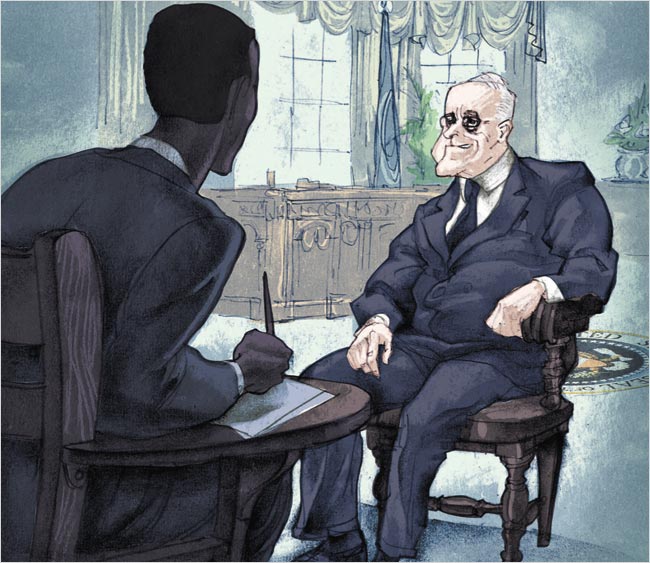Taking Notes!
“We could be facing the greatest loss of liberty and prosperity since the 1930s." – Some Degenerate. Sad to say, that prediction is coming true. We now know the U.S. economy has been in recession for more than 3 years. Most of the world's economies are still suffering from the effects of that crisis, with no end in sight of the spread of this govt. induced disease. When trying to overcome such dire economic circumstances, it is essential to learn from what has and has not worked in similar circumstances in the past. And we need to not only remember, but to understand the past.
History lesson
The closest parallel to our situation today, both economically and politically, is the early 1930s. Although there are differences, there are striking similarities. In both instances, free markets were blamed for problems caused by misguided government policies, which led to additional interventions. This ratcheting up of interventions led to long-term economic decline. For example, the U.S. Federal Reserve began a “monetary expansion” in 1927. This led to a stock market bubble, which the Fed, in 1928, felt it needed to pop. The resulting deflation, combined with the anticipation of other interventions, caused the stock market to drop nearly 50 percent in just two months.
If these interventions had been avoided, there is no reason to believe we wouldn't have escaped with a short-term, if severe, market adjustment rather than an historic depression. Instead, having caused a crash, the government quickly began looking for others to blame - especially bankers, brokers and businessmen. Sound familiar? Getting it wrong!
Far from being a champion of minimal government intervention in markets, as is commonly believed, President Herbert Hoover launched the most interventionist economic program in U.S. history. Hoover supported record income tax hikes and devastating import tariffs. He also initiated an explosion in government power by creating massive new programs. Far from helping, these programs created a destructive “uncertainty” that discouraged investment and entrepreneurship and contributed to the decline.
Unfortunately, most of us (and our children) have been told or taught just the opposite that Hoover was a laissez faire President who let unregulated markets get out of control. Nothing could be farther from the truth. Making matters worse, when Franklin D. Roosevelt came to power after Hoover, he compounded the uncertainty by pursuing a change policy of "bold, persistent experimentation" to end the Depression. This approach, instead, extended and amplified Hoover's mistakes. FDR's actions fundamentally changed the government's role in the economy, and prolonged and deepened the decline.
Rather than following the philosophy that government "can only exercise the powers granted to it" by the U.S. Constitution (as expressed by Chief Justice John Marshall in 1819), Roosevelt changed it to one in which the government has all powers not expressly forbidden by the Constitution. Prior to 1936, U.S. federal regulations covered 2,600 pages. By adopting Roosevelt's philosophy, they have since mushroomed to 72,000 pages. Non-defense spending skyrocketed as dozens of new government agencies (many of them still with us today) were created and most of them are un-necessary wastes of tax payer funds.
Personal income tax rates increased and new taxes, including corporate "excess profits" taxes as high as 90 percent, were imposed. The Great Depression saw the most far-reaching and abusive use of executive privilege in U.S. history. FDR issued 3,466 executive orders, nearly as many as the combined total for all his successors. Our current President, Barrack Obama is almost a reincarnation of FDR and his policies.
What did all that spending, regulation and intervention accomplish?
None of it, including Roosevelt's massive public works programs - solved the problem. In fact, under FDR, unemployment was still more than 23 percent at the end of 1934, and remained at double digit levels until World War II. Businesses, faced with the uncertainty created by invasive and ever-changing government policies, curtailed investment. Thus, share prices remained low. (The stock market did not recover to pre-crash levels until 1954.) The only reason the U.S markets are performing strongly is due to the FED’s position of pumping liquidity into the system, which is artificially creating a Bull Market and false optimisms among the masses.
Tough lessons
The responses we've seen to today's economic crisis make me wonder if we have learned anything at all from the sobering lessons of the past. Once again, our government has allowed a “yo-yo” monetary policy to distort economic reality and wreak havoc on the stock market. Once again, massive government interventions - including bailouts, takeovers and make-work programs - are being offered as the "solution" to our economic problems. Once again, leaders are suggesting we can solve the problem by creating even more government agencies while piling on even more regulations. Once again, the government - rather than the market - is picking who wins or loses.
It is markets, not government, which can provide the strongest engine for growth, lifting us out of these troubling times. If we are foolish enough to ignore some of the most painful lessons of history, then we will almost certainly make the same mistakes on a devastating scale. In the new year of 2011 we have a crack in the door that if taken advantage of can open our country up to the realities of the past 4 years and allow the U.S.A express to get back on the tracks! With new leaders in office this could be the last opportunity we have to get the country back to its original promise to the American people, Freedom!



No comments:
Post a Comment